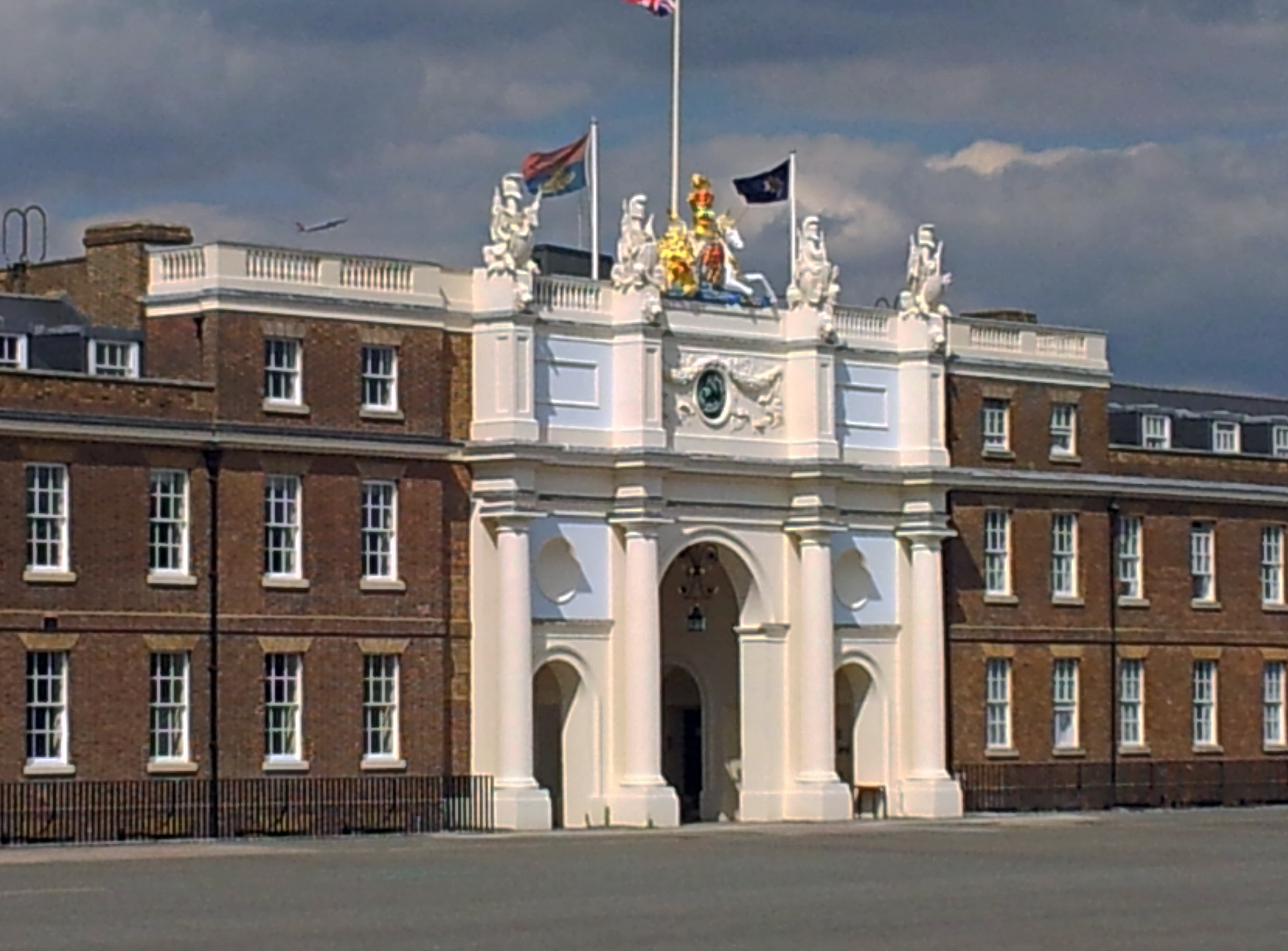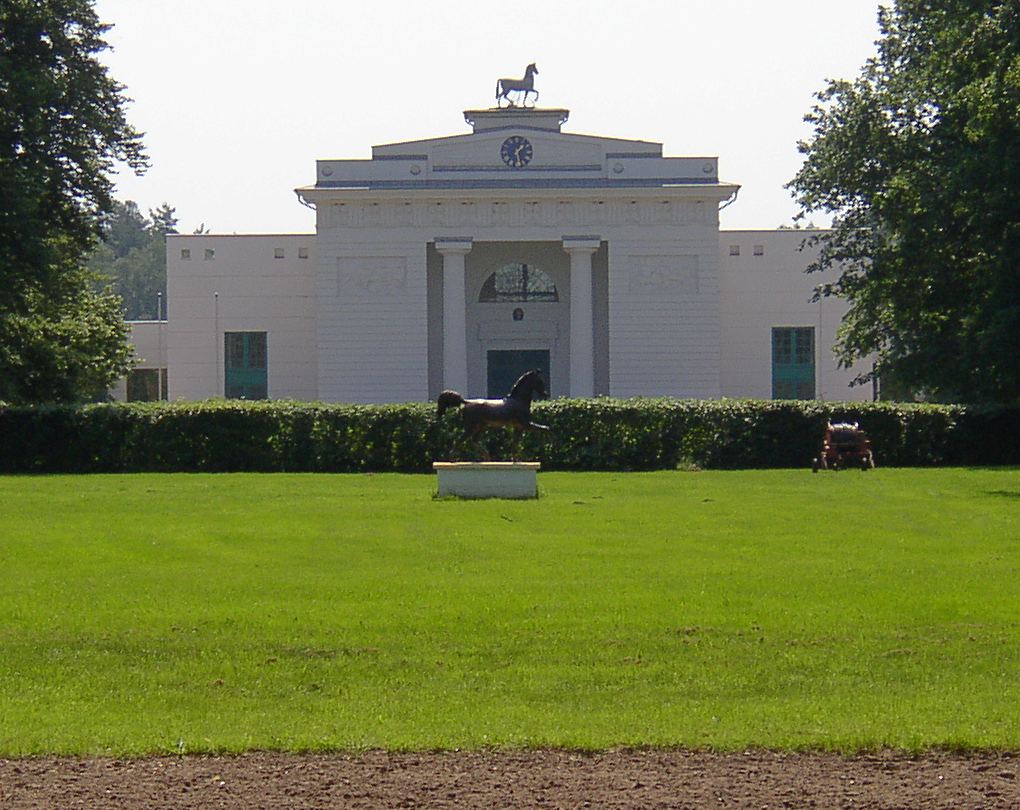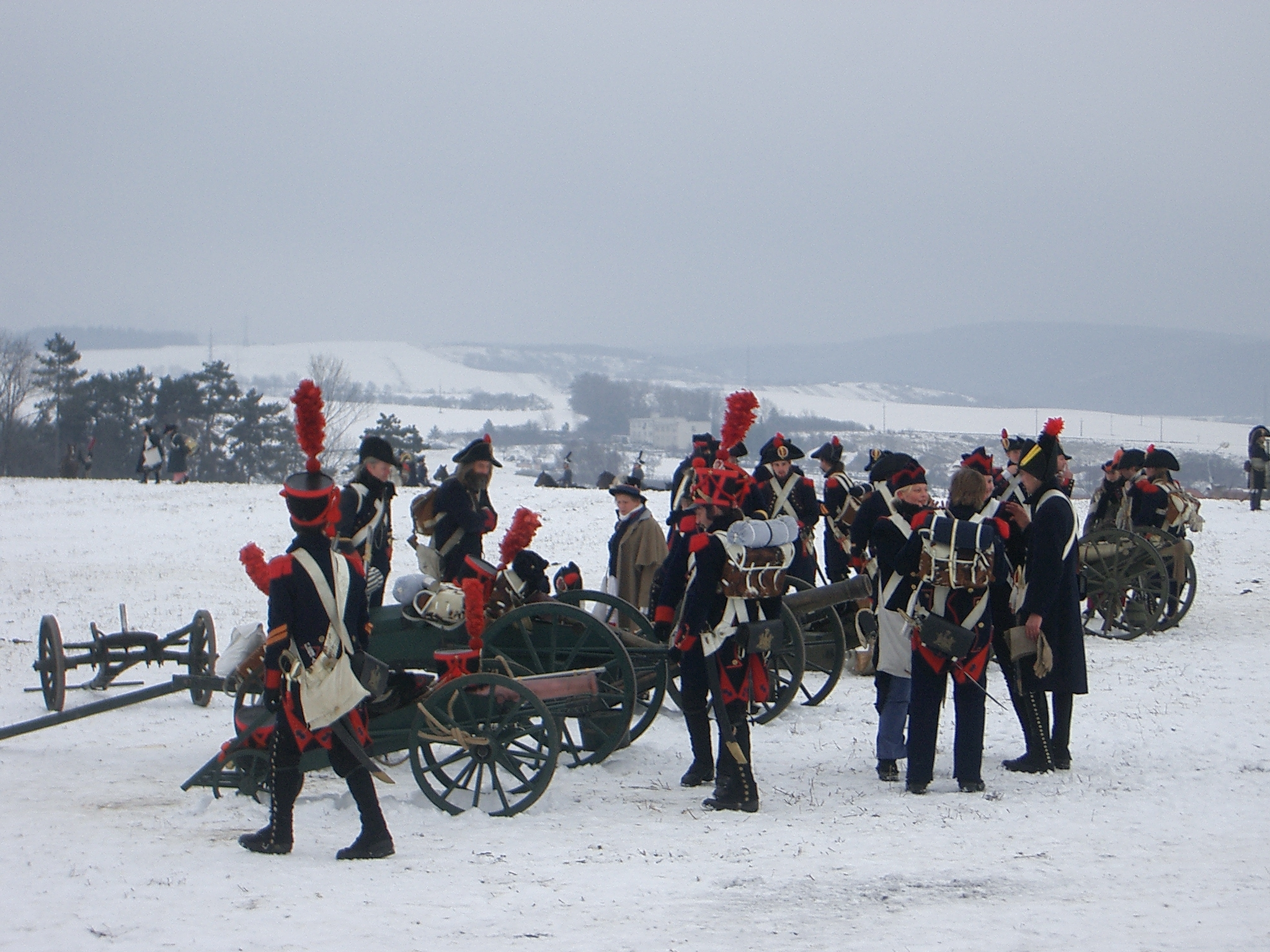|
Royal Artillery Barracks
Royal Artillery Barracks, Woolwich, is a barracks of the British Army which forms part of Woolwich Garrison. The Royal Regiment of Artillery had its headquarters here from 1776 until 2007, when it was moved to Larkhill Garrison. History In 1716 two permanent field companies of Artillery (each of a hundred men) were formed by royal Warrant and placed under the command of the Master-General of the Ordnance. They were initially quartered in the Warren, about half a mile from the current barracks site. By 1771 the Royal Regiment of Artillery numbered over 2,400, over a third of whom were usually quartered in Woolwich. Having outgrown its barracks in the Warren, the regiment looked to establish itself in new quarters elsewhere in Woolwich. 18th-century establishment Work on the new barracks began in 1774 on a site overlooking Woolwich Common. As originally built (1774-6) the barracks frontage was only half the present length, being the eastern half of the current south elevation, ... [...More Info...] [...Related Items...] OR: [Wikipedia] [Google] [Baidu] |
St George's Garrison Church, Woolwich
St George's Garrison Church is a ruined church in Woolwich in the Royal Borough of Greenwich, South East London. It was built in 1862-63 as a Church of England place of worship for the Woolwich Royal Artillery garrison. The church was hit by a V-1 flying bomb in 1944 and largely destroyed by fire. The restored ruin with its canopied roof, its blue, red and yellow brick walls, its mosaics and a memorial garden is open to the public on Sundays. Location The church was built on a triangular plot between Grand Depot Road (part of the A205 or South Circular Road) and Woolwich New Road, its entrance facing the parade ground of the Royal Artillery Barracks on Grand Depot Road. It is surrounded by a small park. On the south side of this park, where the two roads converge, stands the Second Boer War memorial. Both the church and the memorial are part of Woolwich Common conservation area. History Construction and embellishment The first chapel for the Royal Artillery was part of the ... [...More Info...] [...Related Items...] OR: [Wikipedia] [Google] [Baidu] |
Woolwich
Woolwich () is a district in southeast London, England, within the Royal Borough of Greenwich. The district's location on the River Thames led to its status as an important naval, military and industrial area; a role that was maintained throughout the 16th to 20th centuries. After several decades of economic hardship and social deprivation, the area now has several large-scale urban renewal projects. Geography Woolwich is situated from Charing Cross. It has a long frontage to the south bank of the Thames river. From the riverside it rises up quickly along the northern slopes of Shooter's Hill towards the common, at and the ancient London–Dover Road, at . The ancient parish of Woolwich, more or less the present-day wards Woolwich Riverside and Woolwich Common, comprises . This included North Woolwich, which is now part of the London Borough of Newham. The ancient parishes of Plumstead and Eltham became part of the civil parish of Woolwich in 1930. Parts of the wards ... [...More Info...] [...Related Items...] OR: [Wikipedia] [Google] [Baidu] |
Riding Hall
A riding hall, indoor arena, indoor school (UK English), or indoor ring (US English) is a building (part of an equestrian facility) that is specially designed for indoor horse riding. Smaller, private buildings contain only space for riding, while larger commercial facilities contain a "ring" or "arena" within a larger building as exclusively for equestrian use, but may also incorporate additional facilities for spectators or stabling of horses. An outdoor enclosure for riding horses is called a ''riding arena'', ''(training) ring'' (US English), or ''(outdoor) school'' (British English) or, sometimes, a ''manège'' (British English). In other languages, the French word '' manège'', or a derivative, means "riding hall" since, in French, the word refers to an indoor hall, while an outdoor arena is called a '' carrière''. Building design Riding halls enable horses and riders to train or compete in dry conditions regardless of the weather. There are various designs. The most ... [...More Info...] [...Related Items...] OR: [Wikipedia] [Google] [Baidu] |
1841 United Kingdom Census
The United Kingdom Census of 1841 recorded the occupants of every United Kingdom household on the night of Sunday 6 June 1841. The enactment of the Population Act 1840 meant a new procedure was adopted for taking the 1841 census. It was described as the "first modern census" as it was the first to record information about every member of the household, and administered as a single event, under central control, rather than being devolved to a local level. It formed the model for all subsequent UK censuses, although each went on to refine and expand the questions asked of householders. It was important for early demographic analysis of the United Kingdom population and remains of interest to historians, demographers and genealogists, although the information about each person is quite limited compared with that available from later censuses. The total population of England, Wales and Scotland was recorded as 18,553,124. Background Due to the Population Act 1840, the United Kingdo ... [...More Info...] [...Related Items...] OR: [Wikipedia] [Google] [Baidu] |
Field Artillery
Field artillery is a category of mobile artillery used to support armies in the field. These weapons are specialized for mobility, tactical proficiency, short range, long range, and extremely long range target engagement. Until the early 20th century, field artillery were also known as foot artillery, for while the guns were pulled by beasts of burden (often horses), the gun crews would usually march on foot, thus providing fire support mainly to the infantry. This was in contrast to horse artillery, whose emphasis on speed while supporting cavalry units necessitated lighter guns and crews riding on horseback. Whereas horse artillery has been superseded by self-propelled artillery, field artillery has survived to this day both in name and mission, albeit with motor vehicles towing the guns (this towed artillery arrangement is often called mobile artillery), carrying the crews and transporting the ammunition. Modern artillery has also advanced to rapidly deployable wheeled a ... [...More Info...] [...Related Items...] OR: [Wikipedia] [Google] [Baidu] |
Gallery (architecture)
{{Wiktionary, gallery In architecture, "gallery" may refer to: * A balcony or low roof promenade inside a building, or facing a courtyard. ** Gallery (theatre), a zone above other seating, aisles or side rooms inside a theater or church ** Minstrels' gallery, a balcony used by performing musicians * A covered passage connecting fortifications ** Counterscarp gallery, a passage behind the back wall of the defensive ditch of a fort **Gibraltar's Great Siege Tunnels, also known as the Upper Galleries * Long gallery In architecture, a long gallery is a long, narrow room, often with a high ceiling. In Britain, long galleries were popular in Elizabethan and Jacobean houses. They were normally placed on the highest reception floor of English country hous ..., a space in a large house used as both a sitting room and corridor Architectural elements ... [...More Info...] [...Related Items...] OR: [Wikipedia] [Google] [Baidu] |
Stuccoed
Stucco or render is a construction material made of aggregates, a binder, and water. Stucco is applied wet and hardens to a very dense solid. It is used as a decorative coating for walls and ceilings, exterior walls, and as a sculptural and artistic material in architecture. Stucco can be applied on construction materials such as metal, expanded metal lath, concrete, cinder block, or clay brick and adobe for decorative and structural purposes. In English, "stucco" sometimes refers to a coating for the outside of a building and "plaster" to a coating for interiors; as described below, however, the materials themselves often have little to no differences. Other European languages, notably Italian, do not have the same distinction; ''stucco'' means ''plaster'' in Italian and serves for both. Composition The basic composition of stucco is cement, water, and sand. The difference in nomenclature between stucco, plaster, and mortar is based more on use than composition. Until t ... [...More Info...] [...Related Items...] OR: [Wikipedia] [Google] [Baidu] |
Colonnades
In classical architecture, a colonnade is a long sequence of columns joined by their entablature, often free-standing, or part of a building. Paired or multiple pairs of columns are normally employed in a colonnade which can be straight or curved. The space enclosed may be covered or open. In St. Peter's Square in Rome, Bernini's great colonnade encloses a vast open elliptical space. When in front of a building, screening the door (Latin ''porta''), it is called a portico. When enclosing an open court, a peristyle. A portico may be more than one rank of columns deep, as at the Pantheon in Rome or the stoae of Ancient Greece. When the intercolumniation is alternately wide and narrow, a colonnade may be termed "araeosystyle" (Gr. αραιος, "widely spaced", and συστυλος, "with columns set close together"), as in the case of the western porch of St Paul's Cathedral and the east front of the Louvre. History Colonnades have been built since ancient times and in ... [...More Info...] [...Related Items...] OR: [Wikipedia] [Google] [Baidu] |
Triumphal Arch
A triumphal arch is a free-standing monumental structure in the shape of an archway with one or more arched passageways, often designed to span a road. In its simplest form a triumphal arch consists of two massive piers connected by an arch, crowned with a flat entablature or attic on which a statue might be mounted or which bears commemorative inscriptions. The main structure is often decorated with carvings, sculpted reliefs, and dedications. More elaborate triumphal arches may have multiple archways. Triumphal arches are one of the most influential and distinctive types of architecture associated with ancient Rome. Thought to have been invented by the Romans, the Roman triumphal arch was used to commemorate victorious generals or significant public events such as the founding of new colonies, the construction of a road or bridge, the death of a member of the imperial family or the ascension of a new emperor. The survival of great Roman triumphal arches such as the Arch of Ti ... [...More Info...] [...Related Items...] OR: [Wikipedia] [Google] [Baidu] |
Parade Ground
A parade is a procession of people, usually organized along a street, often in costume, and often accompanied by marching bands, floats, or sometimes large balloons. Parades are held for a wide range of reasons, but are usually celebrations of some kind. In British English, the term "parade" is usually reserved for either military parades or other occasions where participants march in formation; for celebratory occasions, the word procession is more usual. The term "parade" may also be used for multiple different subjects; for example, in the Canadian Armed Forces, "parade" is used both to describe the procession and in other informal connotations. Protest demonstrations can also take the form of a parade, but such cases are usually referred to as a march instead. Parade float The parade float got its name because the first floats were decorated barges that were towed along the canals with ropes held by parade marchers on the shore. Floats were occasionally propelled from wit ... [...More Info...] [...Related Items...] OR: [Wikipedia] [Google] [Baidu] |
Cafeteria
A cafeteria, sometimes called a canteen outside the U.S., is a type of food service location in which there is little or no waiting staff table service, whether a restaurant or within an institution such as a large office building or school; a school dining location is also referred to as a dining hall or lunchroom (in American English). Cafeterias are different from coffeehouses, although the English term came from the Spanish ''cafetería'', same meaning. Instead of table service, there are food-serving counters/stalls or booths, either in a line or allowing arbitrary walking paths. Customers take the food that they desire as they walk along, placing it on a tray. In addition, there are often stations where customers order food, particularly items such as hamburgers or tacos which must be served hot and can be immediately prepared with little waiting. Alternatively, the patron is given a number and the item is brought to their table. For some food items and drinks, such a ... [...More Info...] [...Related Items...] OR: [Wikipedia] [Google] [Baidu] |
Royal Corps Of Artillery Drivers
The Corps of Royal Artillery Drivers was a British Army corps founded (as the 'Corps of Captain Commissaries and Drivers') in 1793 and disbanded in 1822. It was established to provide trained and disciplined drivers for the Royal Artillery, a service that had previously relied upon civilian contractors. Though closely associated with the Royal Regiment of Artillery the corps was listed separately from it in the '' London Gazette'' until at least 1815. By 1814 the corps numbered more than 7,400 men and fielded more than 2,600 men at the 1815 Battle of Waterloo. The unit was reduced in size after the end of the Napoleonic Wars and disbanded in 1822 by the Duke of Wellington. Foundation and service What later became the Corps of Royal Artillery Drivers was founded in 1793 by Charles Lennox, 3rd Duke of Richmond who, as Master-General of the Ordnance, had responsibility for the British Army's artillery, engineers and logistics. Prior to this time the artillery guns, ammunition an ... [...More Info...] [...Related Items...] OR: [Wikipedia] [Google] [Baidu] |








